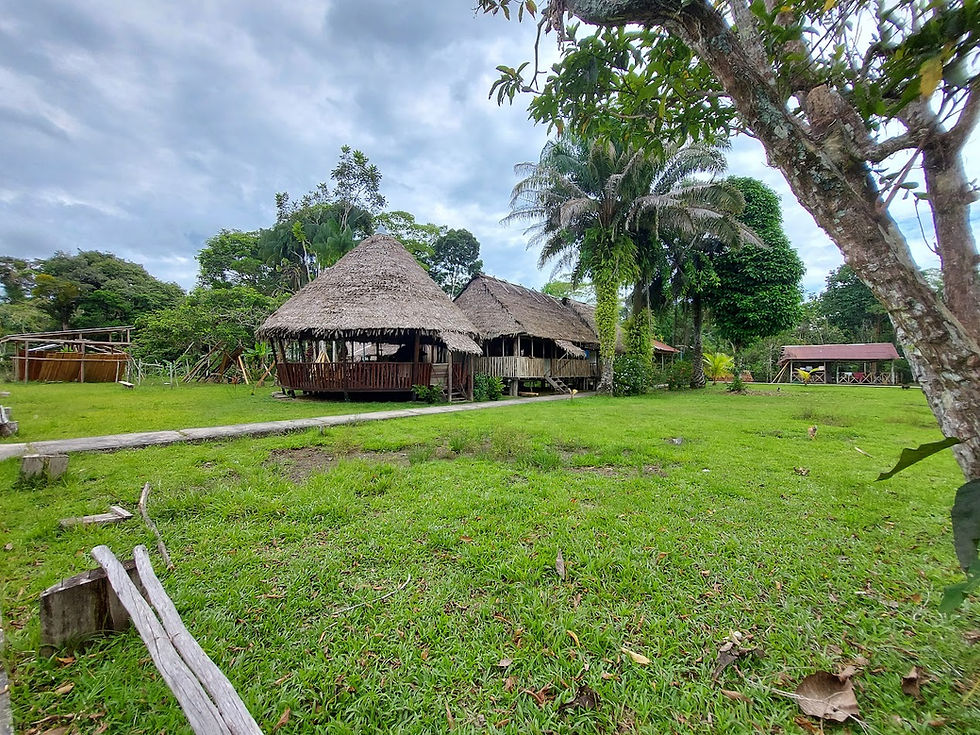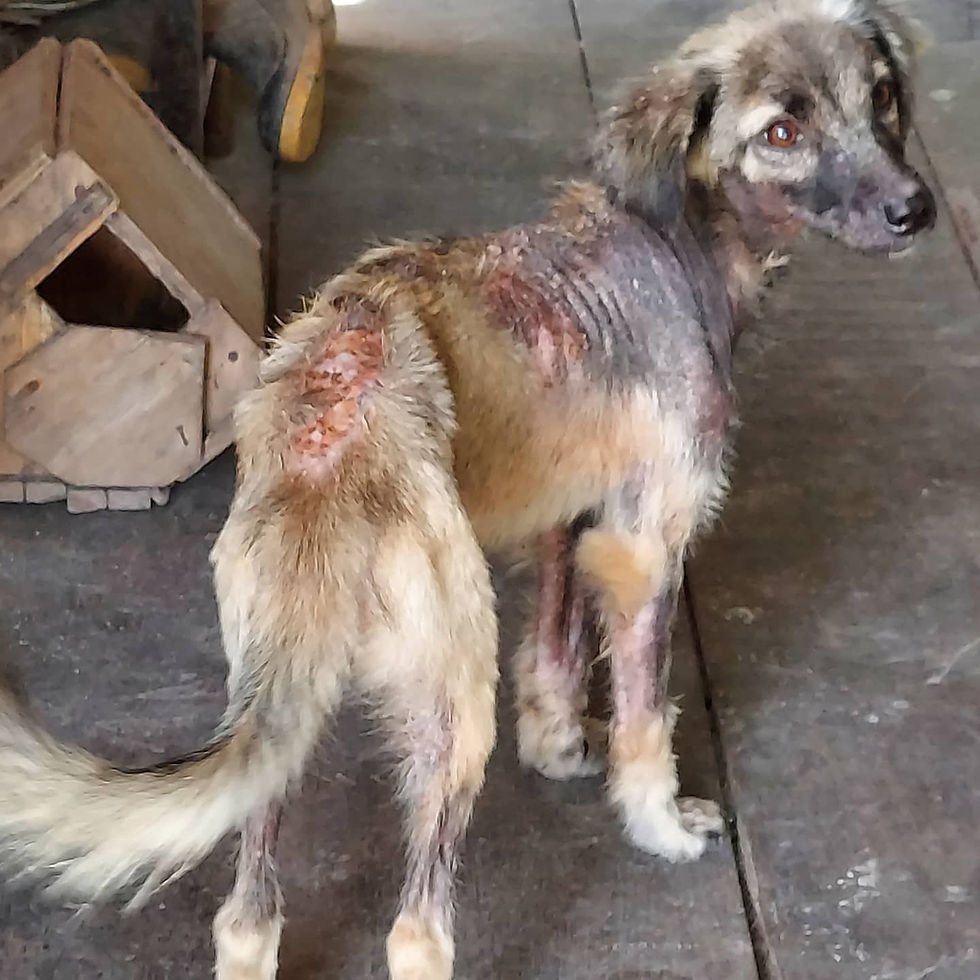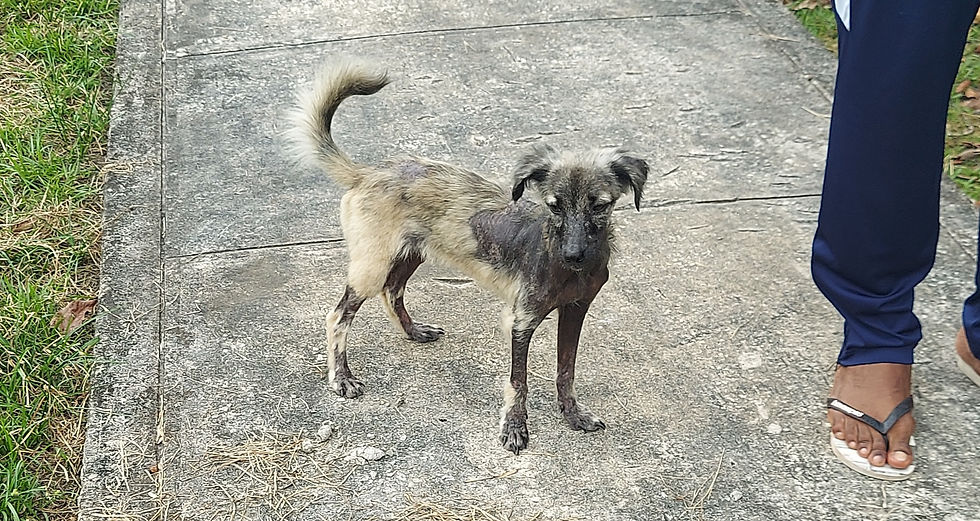Sultan, a puppy in Mishana, Peru
- blackbirdhomeopath
- Jun 23, 2022
- 3 min read

In the spring of 2021, I travelled to a village in the Amazon Basin in Peru for a month-long retreat. The second week that I was there, I was made aware of a sick puppy in the village and was asked to see if I could help.

I had two 50 remedy kits with me, one of 30C potencies and another with 200C. I also had brought dropper bottles and nitrile gloves with me in case.
There was an extended family of dogs in the village that were nominally owned by an elderly couple. The dog pack roamed at will, and consisted of four or five adults and about six, six-month-old puppies. They were the alarm system for the village. They could be heard most nights alerting the villagers to any potential threats: snakes, jungle cats, especially howler monkeys. By day they roamed about mostly together investigating stuff, and begging for scraps and scratches. They all had fleas, so we generally did not touch them if we could help it.

One of the puppies, Sultan (second from the top), was not well. He was severely underweight, had lost fur over about a third of his body, scratched himself constantly and had open sores covering an additional 10-15 percent of his skin. His symptoms were typical of a mange infestation. Mange is caused by a skin mite, very similar to the mite that causes scabies in human beings. Sultan also had the fleas that were common to all of the other dogs. The mange infestation had also impacted his growth, as he was by far the smallest among his siblings. There in the Amazon jungle, Sultan did not look like he was going to last much longer. He was already being fed separately from the other dogs because he could not compete for the food that was put out for them collectively.

He was a sad, but sweet puppy, even despite his clearly miserable condition.
I repertorized his case based on his physical symptoms and the results confirmed what I already felt sure was the correct remedy. Sulphur.
In homeopathic practice, the remedy, Sulphur is deeply associated with scabies and has been used to treat it just about as long as the remedy has been in use. For most classical homeopaths, I think it would have been hard NOT to give Sulphur. Nonetheless, when one has client suffering as severely as poor Sultan was, one wants to be absolutely sure one is making the best choice one can make. When my due diligence was complete, I felt sure that Sulphur was a solid choice.
6C or 12C potencies are most commonly used for animal cases. If I had them with me, I might have considered them, but I only had 30C and 200C available to me. Were he not so severely ill, I might have gone with the 30C, but in assessing Sultan's vital force, I felt that despite the severity of the condition that as a puppy, in an supportive and stimulating family environment with ideal diet at natural conditions, that he would tolerate a high potency. I opted to give him a dose of 200C, aq (a water dose).
To prepare the water dose, I put a single pellet in a 1oz dropper bottle with a few drops of ethyl alcohol, to keep it from turning. I succussed the solution 10x and holding Sultan's mouth open with one gloved hand, squirted a few drops of the remedy in with the other.

There were no immediate indications that the remedy was acting, so it took about ten days before I was sure that the previously open lesions on his skin had closed up. Those areas also peeled, in the same way that you see in someone healing from a sunburn.

He continued to improve, both in his appearance, but also in terms of his activity level and willingness to assert himself among the other dogs. When I left Peru, I felt confident that the remedy was working well.

All in all, I gave Sultan three wet doses of Sulphur 200C while I was there, each about a week apart.
A month later the friend who had put me on the case, emailed me a photo of Sultan.

This is Sultan, after five weeks and three doses. My friend reported that the dog had fully recovered and had been given as a gift to a family in a nearby village.




Comments